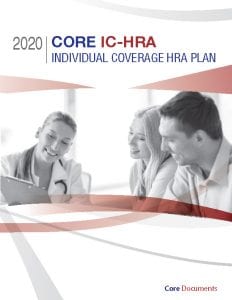The world of health benefits is changing, giving people greater options and flexibility than in the past. The Dental Health Reimbursement Layout (Dental HRA) plans and People Coverage Health Reimbursement Arrangement (ICHRA) plans are the two significant players in this period of change. Let’s examine the fundamentals of these cutting-edge products.
Personal Coverage HRA: A Customized Method for Health Insurance
Plans under the ICHRA reshape how people obtain health care. These flexible plans are intended for independent contractors, part-timers, and people going through a change in circumstances. The secret is customization: ICHRA gives people the freedom to select their health insurance plan according to their particular requirements. ICHRA plans provide a customized approach to medical insurance, enabling individuals to take control of their health benefits, from eligibility requirements to contribution structures.

Dental HRA: Promoting Smiles and Dental Wellness
Dental HRA plans emphasize the value of oral health in addition to the wider range of health coverage. Dental HRA plans guarantee that people can get excellent dental services, which is important for overall health. These plans support preventive care and take care of oral problems by covering for a variety of dental costs, from regular checkups to more involved procedures.
**The Ideal Combination: Bringing together Dental HRA and ICHRA**
The combination of these plans is what makes these options even more appealing. Individuals can create a complete health benefits package that includes both dental and medical coverage thanks to the collaboration between theIndividual Coverage HRA and Dental HRA. Because of this integration, healthcare is provided in a comprehensive manner, meeting the various needs of patients and their families.

The power of choice is revolutionary in a world where people’s health and well-being are of utmost importance. Individuals are empowered to choose Individual Coverage HRA and Dental HRAplans that precisely match their individual health needs, as well as to navigate the complexities of health coverage. The combination of Dental HRAand ICHRA is evidence of how individualized healthcare solutions are developing as we continue to embrace this era of customized benefits.
If you are looking for more information about Individual coverage HRA or Dental HRA plan do check coredocuments.com, They have all the information about all types of insurance plans.













